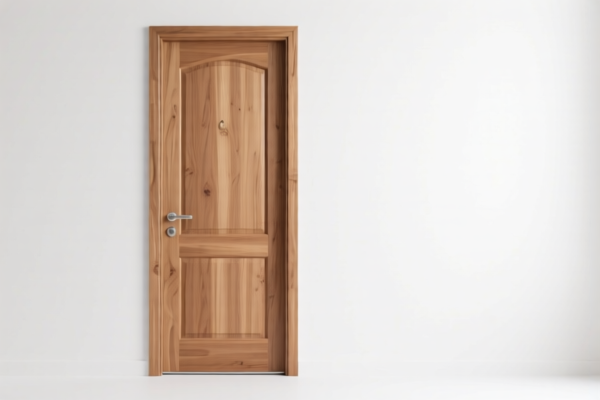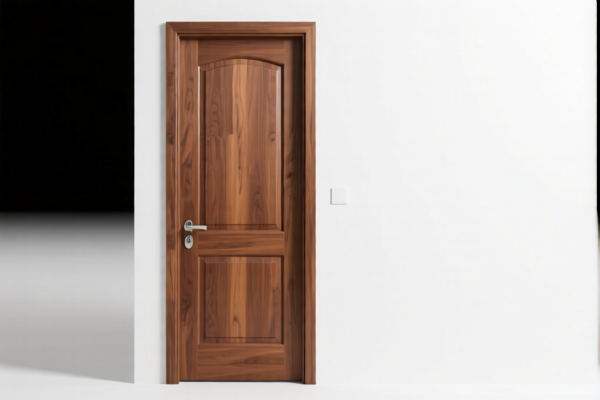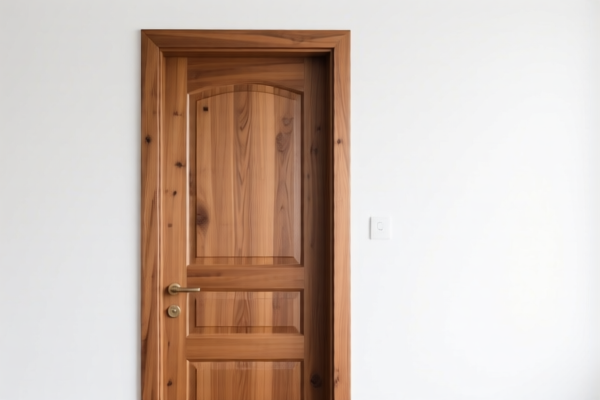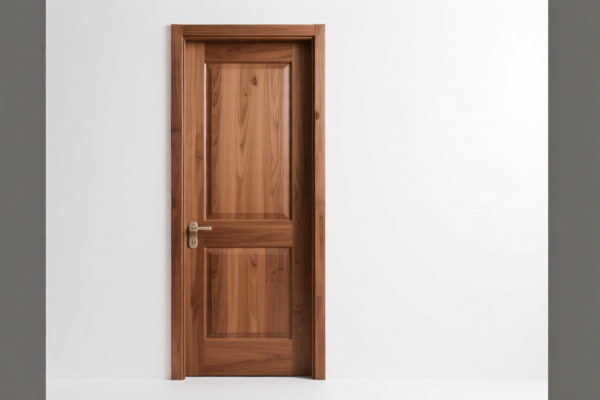Found 8 matching results
(CN → US)
| HS Code | Official Doc | Tariff Rate | Origin | Destination | Effective Date |
|---|---|---|---|---|---|
| 4418919105 | Doc | 58.2% | CN | US | 2025-05-12 |
| 4412335700 | Doc | 63.0% | CN | US | 2025-05-12 |
| 4412925205 | Doc | 55.0% | CN | US | 2025-05-12 |
| 9403308090 | Doc | 55.0% | CN | US | 2025-05-12 |
| 9403910080 | Doc | 55.0% | CN | US | 2025-05-12 |
| 1201100000 | Doc | 55.0% | CN | US | 2025-05-12 |
| 1201900005 | Doc | 55.0% | CN | US | 2025-05-12 |
| 1208900000 | Doc | 56.4% | CN | US | 2025-05-12 |




Wood Door
A wood door is a door constructed primarily from wood, utilized as a barrier between spaces, offering security, privacy, and aesthetic appeal.
Material
Wood doors are commonly fabricated from both solid wood and engineered wood.
- Solid Wood: Typically hardwoods like oak, maple, cherry, mahogany, or walnut, known for durability, aesthetic grain patterns, and ability to be refinished. Can also be constructed from softwoods like pine or fir, often used for interior doors.
- Engineered Wood: Includes options like:
- Solid Core Doors: Constructed with a solid wood particleboard or composite core covered by a wood veneer. Offers improved sound insulation and stability compared to hollow-core doors.
- Hollow-Core Doors: Feature a lightweight core (often cardboard or a honeycomb structure) sandwiched between wood veneer or laminate surfaces. Primarily used for interior applications where sound isolation and security are less critical.
- MDF (Medium-Density Fiberboard) Doors: A type of engineered wood product offering a smooth surface suitable for painting and detailing.
Purpose
- Security: Provides a physical barrier against unauthorized entry. Solid wood doors offer the highest level of security.
- Privacy: Offers visual and auditory separation between spaces.
- Aesthetic Appeal: Contributes to the overall design and style of a building.
- Insulation: Wood provides a degree of thermal and acoustic insulation.
Function
- Swing Doors: The most common type, hinged on one side to allow movement in one or both directions.
- Sliding Doors: Move horizontally along a track, often used for space-saving applications or access to patios/decks.
- Folding Doors: Composed of multiple panels that fold together, useful for dividing large spaces.
- Pocket Doors: Slide into a recess within the wall, maximizing space.
Usage Scenarios
- Exterior Doors: Used as the main entry point to a building, requiring weather resistance, security features (e.g., deadbolts, reinforced frames), and insulation.
- Interior Doors: Used to separate rooms within a building, offering privacy and sound isolation. Can be used for bedrooms, bathrooms, closets, or pantries.
- Garage Doors: Often constructed with wood panels over a steel frame, providing access to a garage.
- Barn Doors: Sliding doors often used in rustic or farmhouse-style interiors.
Common Types
- Flush Doors: Have a smooth, flat surface on both sides.
- Panel Doors: Feature raised or recessed panels within a frame. Common styles include:
- Raised Panel Doors: Panels are raised above the surrounding frame.
- Flat Panel Doors: Panels are flush with the surrounding frame.
- French Doors: Feature multiple glass panes within a frame, allowing for increased light and visibility.
- Dutch Doors: Divided horizontally, allowing the top half to be opened while the bottom half remains closed.
- Bifold Doors: Composed of two panels that fold together.
The declared goods are wood doors, which are typically used as building materials for residential or commercial structures, providing access and security. They can be constructed from various wood types, including solid wood, engineered wood, or wood panels.
The following HS codes are relevant based on the provided reference material:
- 4418919105: This HS code falls under Chapter 44 (Wood and articles of wood; wood charcoal). Specifically, it covers builders' joinery and carpentry of wood, including cellular wood panels and assembled flooring panels; shingles and shakes. The '91' subheading indicates other products within this category, and '9105' specifies those made of bamboo. While the declared good is a wood door and not specifically bamboo, this code is included as it relates to wood construction materials. The applicable tax rate is a base tariff of 3.2%, an additional tariff of 25.0%, and a tariff of 30.0% after April 2, 2025, resulting in a total tariff of 58.2%.
- 4412335700: This HS code is under Chapter 44, covering plywood, veneered panels and similar laminated wood. The '33' subheading refers to other plywood consisting solely of sheets of wood (other than bamboo), each ply not exceeding 6 mm in thickness. '5700' further specifies other plywood with at least one outer ply of nonconiferous wood of species like alder, ash, beech, birch, cherry, chestnut, elm, eucalyptus, hickory, horse chestnut, lime, maple, oak, plane tree, poplar and aspen, robinia, tulipwood or walnut. If the wood door is constructed using these specific wood species as a component, this code may be applicable. The applicable tax rate is a base tariff of 8.0%, an additional tariff of 25.0%, and a tariff of 30.0% after April 2, 2025, resulting in a total tariff of 63.0%.
- 4412925215: This HS code also falls under Chapter 44, covering plywood, veneered panels and similar laminated wood. The '92' subheading refers to other products within this category, and '5215' specifies other plywood with at least one outer ply of nonconiferous wood. If the wood door is constructed using nonconiferous wood, this code may be applicable. The applicable tax rate is a base tariff of 0.0%, an additional tariff of 25.0%, and a tariff of 30.0% after April 2, 2025, resulting in a total tariff of 55.0%.
Customer Reviews
No reviews yet.